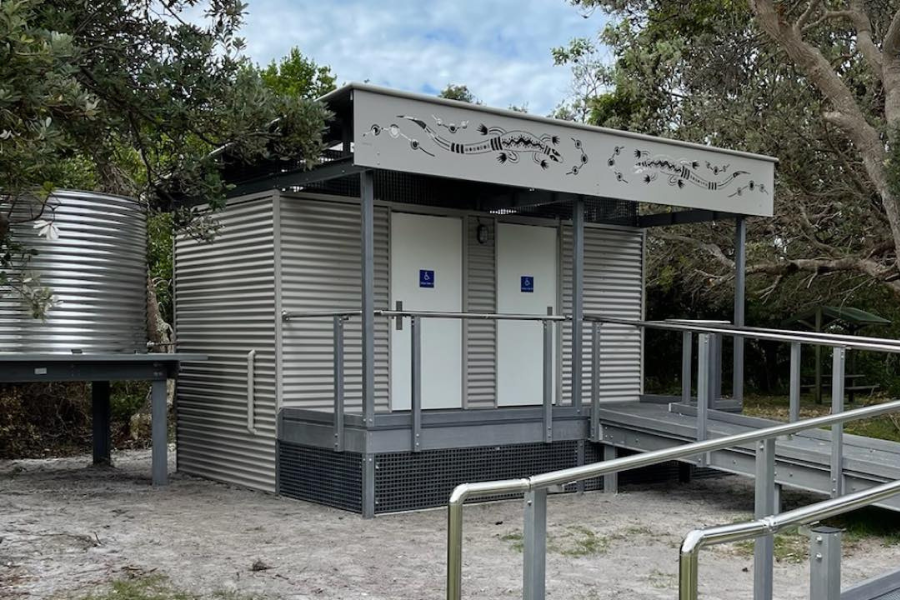
Delivering reliable amenities in parks, playgrounds, sports grounds, and waterfront reserves shouldn’t be hard work. Prefabricated (kit-set) toilet buildings give councils, schools, and asset owners a faster, cleaner pathway from concept to opening—especially where town water, sewer, or mains power are limited.
Every site is different. LooCube supports multiple pathways so you’re not locked into one approach:
Wastewater: waterless composting toilets or low-water pans with holding tank for sensitive/remote sites; or connect to septic/sewer where available.
Water: rainwater harvesting or tank supply; or connect to town supply.
Power: solar lighting/controls (and composting ventilation) or hard-wired to mains.
This flexibility suits everything from neighbourhood playgrounds and multi-code sports fields to coastal reserves and cycle-trail trailheads.
Start simple, scale as needed. LooCube™ modules can be supplied as single, twin, or multi-cubicle blocks with options for:
Because the system is modular, adding extra cubicles or a service/storeroom later is straightforward—no need to start again.
Layouts are developed to support NZS 4121:2001 – Design for access and mobility (as referenced in the NZ Building Code) for accessible routes, clearances, fixtures, and signage. Where an ambulant cubicle is required, projects commonly adopt AS 1428.1:2021 details by agreement with the BCA. We also apply CPTED principles—clear sightlines, even lighting, obvious entries—to reduce misuse and improve user confidence.
Access ramps: FRP ramps feature non-slip, drain-through grating for safe entry in wet conditions and easier cleaning.
Aotearoa throws salt air, high UV, and sudden weather shifts at public assets. LooCube™ uses fibre-reinforced polymer (FRP) and coated steel for a corrosion-resistant shell; wipe-clean internal linings; and tamper-resistant hardware. Optional anti-graffiti coatings speed recoveries after incidents. Components are standardised for fast replacement and lower OPEX.
Natural light and skylights reduce daytime energy use. After dark, specify vandal-resistant luminaires with timeclock or photo-sensor control. Off-grid sites pair solar lighting with efficient fittings; mains-connected sites can integrate wayfinding and perimeter lighting for safer approaches.
Scope & consent: confirm layout, services model, accessibility, CPTED, and finishes.
Foundation: slab or piles prepared by your contractor.
Assembly: prefabricated sections are installed and sealed; fixtures fitted.
Commissioning: connect services or activate off-grid systems; open to the public.
With the base ready, on-site assembly is typically measured in days, limiting disruption across public spaces and park operations.
Playground area: two unisex cubicles (one accessible), solar lighting, rainwater hand-wash, holding tank, FRP ramp.
Playing fields: multi-cubicle block with storeroom, hard-wired power, septic or sewer connection, hose-down interior.
Coastal reserve: zero discharge composting toilet, anti-graffiti interior, photo-sensitive lighting.
We’ll configure a LooCube™ solution matched to your site, services, and budget—off-grid or fully serviced, urban or remote. Contact WCTNZ® for design and pricing.